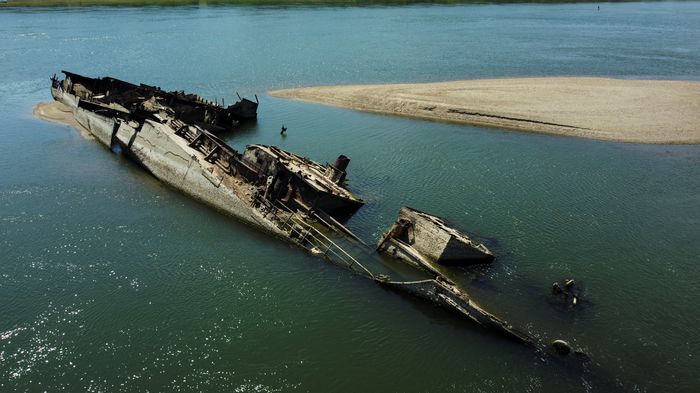The mighty Danube has reached one of its lowest levels in nearly a century, exposing the hulks of dozens of explosives-laden German battleships destroyed during World War II near Serbia’s river port town of Prahovo.
The ships were among hundreds destroyed along the Danube by Nazi Germany’s Black Sea navy as they retreated from advancing Soviet forces in 1944, and they continue to impede river movement during low water levels.
However, this year’s drought, which scientists believe is caused by global warming, has exposed more than 20 hulks on a stretch of the Danube near Prahovo in eastern Serbia, many of which still hold tons of munitions and explosives and represent a risk to shipping.
“The German flotilla has left behind a big ecological disaster that threatens us, people of Prahovo,” said Velimir Trajilovic, 74, a Prahovo pensioner who wrote a book about the German ships.
Workers in the local fishing sector, especially those from Romania, which is close across the river, are also at risk.
Months of drought and record-breaking temperatures have hampered river traffic on important arteries in Germany, Italy, and France. To keep Danube shipping lanes open, Serbian officials have resorted to dredging.
By Prahovo, some of the hulks have reduced the navigable part of the Danube to 100 metres (330 feet) from 180 metres. Some of the ships still have turrets, command bridges, shattered masts, and twisted hulls strewn across the riverbank, while others are mostly sunk beneath sand banks.
The Serbian government issued a tender in March for the salvaging of the hulks as well as the removal of ammunition and explosives. The procedure was projected to cost 29 million euros ($30 million).








